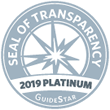
Clinical Thyroidology for the Public summarizes selected research studies discussed in the previous month’s issue of Clinical Thyroidology, an official publication of the American Thyroid Association. Editor-in-chief, Alan Farwell, MD, FACE
Available in pdf format for saving and printing and Web page format for viewing online
PDF Format for Saving and Printing
Clinical Thyroidology for the Public Volume 16 Issue 9 (PDF file, 2.54MB)
TABLE OF CONTENTS – Web Format
THYROID CANCER
Active surveillance vs surgery in adults with low risk thyroid cancer
The concept of monitoring small, low risk thyroid cancers with ultrasound instead of opting for immediate surgery, called active surveillance, was introduced in Japan. Research data on long-term outcomes, however, is scant. This study reports on the long-term experience with active surveillance for papillary thyroid microcarcinoma in Japan.
Miyauchi A et al 2023 Long-term outcomes of active surveillance and immediate surgery for adult patients with low-risk papillary thyroid microcarcinoma: 30-year experience. Thyroid. Epub 2023 May 29. PMID: 37166389.
THYROID CANCER
Patients electing active surveillance for low-risk papillary thyroid cancer have lower baseline anxiety
Recent data shows that small cancers (<1 cm) are usually low risk for growing and spreading. Active surveillance, or following the nodule by ultrasound rather than moving to immediate surgery, is becoming an acceptable option in the management of small low-risk papillary thyroid cancer .This study was done to compare the quality of life over time of patients who chose active surveillance and those who chose immediate surgery for small, low risk papillary thyroid cancer.
Kazusaka H et al 2023 Patient-reported outcomes in patients with low-risk papillary thyroid carcinoma: Cross-sectional study to compare active surveillance and immediate surgery. World J Surg 47:1190–1198. PMID: 36282283
THYROID CANCER
How do we make better shared-decisions for thyroid cancer?
Over the years, there has been more involvement of the patient in discussions to determine the best treatment option, a process known as “shared-decision making”. To make this happen in the best possible way, we need to understand the factors that influence the decisions for both the patients and doctors. This study wanted to find out which are the most important of these factors and suggest ideas for better decision making tools for patients with low-risk thyroid cancer.
Yang W et al 2023 Challenges of shared decision-making by clinicians and patients with low-risk differentiated thyroid cancer: A systematic review and meta-ethnography. JAMA Otolaryngol Head Neck Surg 149:452–459. PMID: 36951823.
THYROID CANCER
Excellent survival in younger children compared to adolescents and young adults despite having more advanced papillary thyroid cancer
Papillary thyroid cancer often presents with more aggressive disease in children as compared to than in adults. Despite this more advanced presentation, survival rate in children is higher than in adults with similar disease. This study was done to further look at the relationship between papillary thyroid cancer recurrence vs age in the pediatric population and to compare this to a young adult population.
Thiesmeyer JW et al 2023 Prepubertal children with papillary thyroid carcinoma present with more invasive disease than adolescents and young adults. Thyroid 33:214–222. PMID: 36355601.
THYROID NODULES
The risk of thyroid cancer is higher than previously thought when thyroid biopsies show uncertain results
In about 10-20% of thyroid biopsies, a diagnosis cannot be made and the results are called indeterminate. There are three types of indeterminate biopsies, called Bethesda 3, Bethesda 4 and Bethesda 5, with the risk of cancer ranging from 12-52%. This study reviewed recent data to determine if these risks have changed.
Delman AM et al 2023 The national rate of malignancy among Bethesda III, IV, and V nodules is higher than expected: A NSQIP analysis. Surgery 173:645–652. PMID: 36229250.
HYPERTHYROIDISM
How common is thyroid storm and which groups have the highest rates of death from this condition?
Thyroid Storm is the most severe form of hyperthyroidism and can be life-threatening. To learn more about this condition and how it affects different populations, this study was conducted using a large database of medical claims from Germany to estimate how often thyroid storm occurs and the likelihood of survival for those who experience it.
Thiyagarajan A et al Estimating Incidence and Case Fatality of Thyroid Storm in Germany Between 2007 and 2017: A Claims Data Analysis. Thyroid. 2022 Nov;32(11):1307-1315. doi: 10.1089/thy.2022.0096. Epub 2022 Sep 28. PMID: 36006371.



